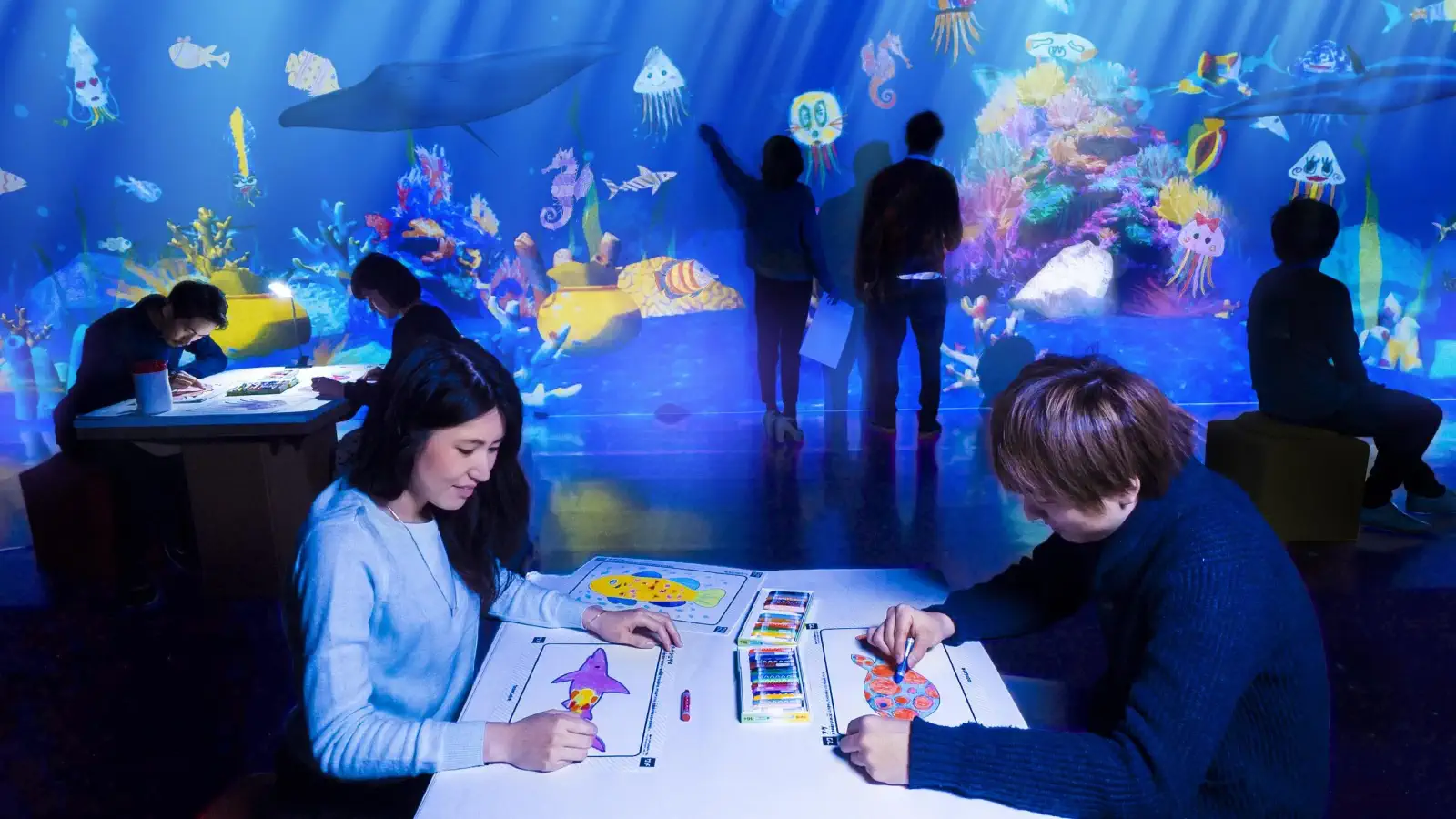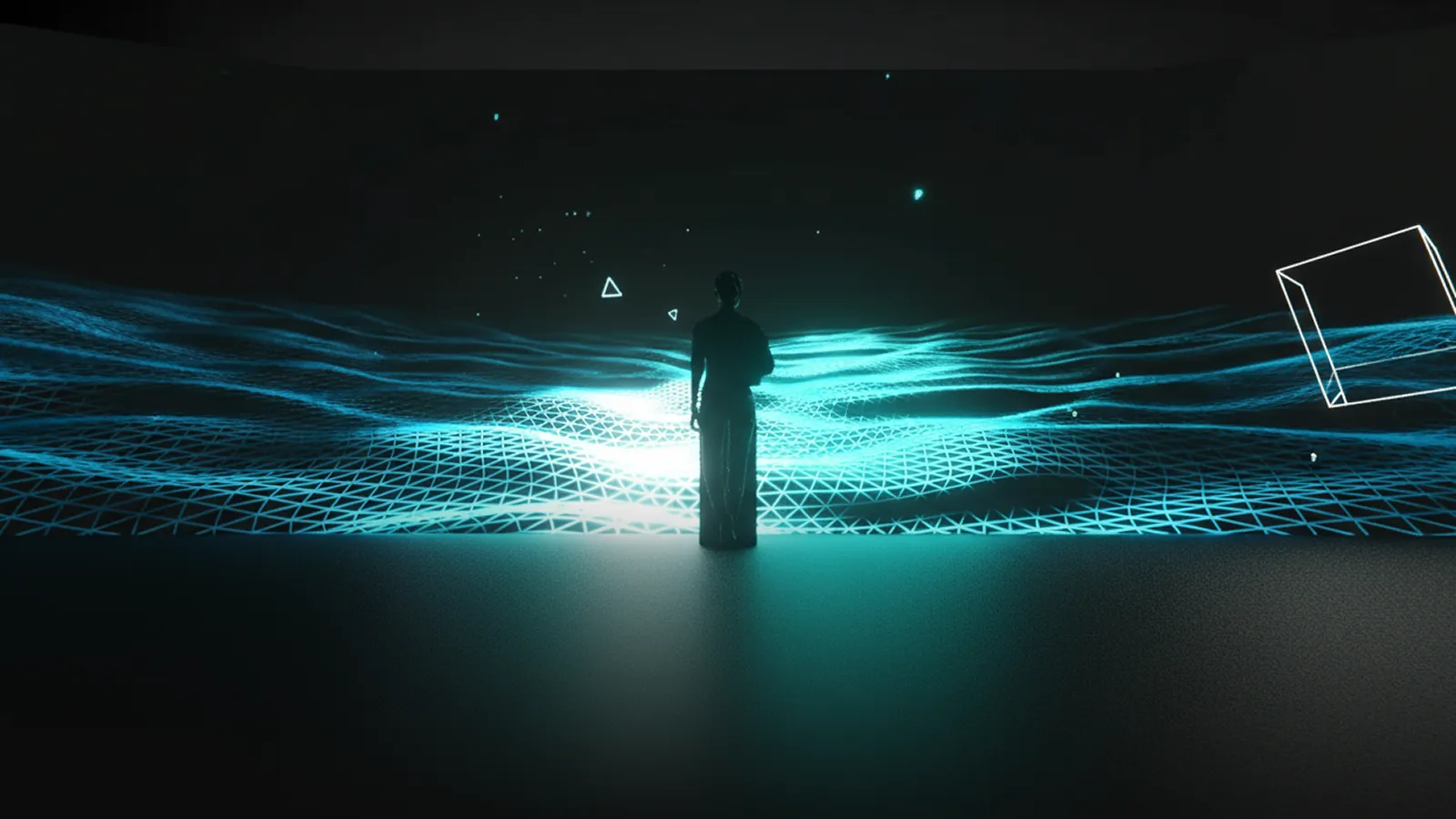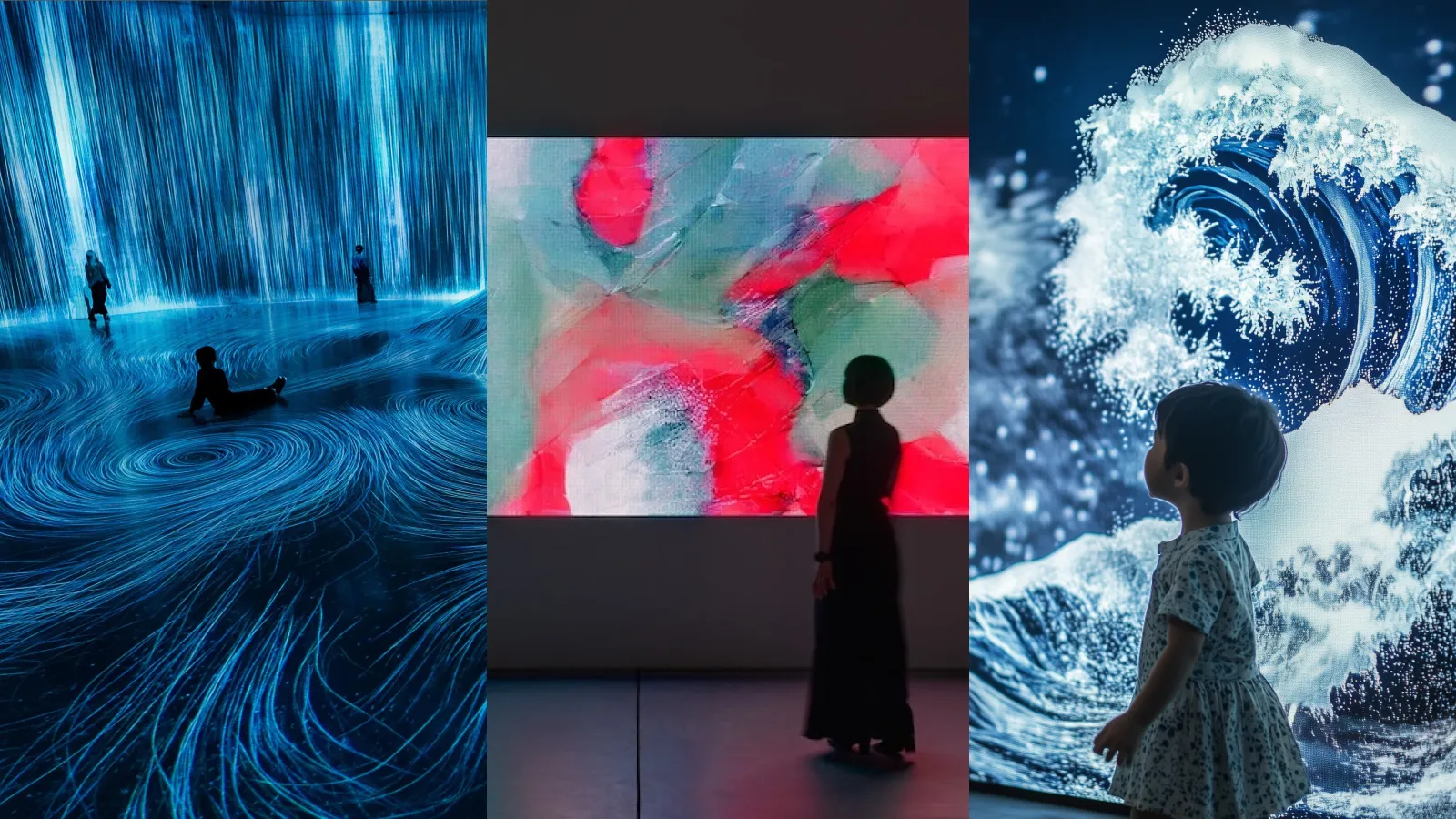Museums aren’t just places to look—they’re places to do.
Interactive museum installations invite visitors to touch, move, and make choices that shape the story. Done well, they increase dwell time, improve learning outcomes, and turn a one-off visit into memberships, donations, and word-of-mouth.
This guide explains what interactive installations are, the benefits museums actually see, real-world examples, costs and timelines.
Who this is for: Directors, curators, education teams, visitor experience leads, and exhibition designers evaluating interactive media for new or renewing galleries.
What Is an Interactive Museum Installation?
An interactive museum installation is an exhibit element that responds to visitor input—touch, motion, voice, device, or presence—to reveal media, narratives, or tasks. The aim isn’t novelty; it’s agency: letting visitors make choices, test ideas, and see consequences in ways that deepen understanding and memory.
Common ingredients
- Responsive software (kiosks, touch tables, WebGL/WebGPU)
- Sensors (touch, motion, depth, RFID, CV/ML presence)
- Media layers (video, AR overlays, spatial audio)
- Tactile models and physical computing (haptics, 3D prints)
- A CMS so curators can update content without developers
Benefits at a Glance
| Outcome | Why it matters | What we deliver |
|---|---|---|
| Longer dwell time | Visitors stay with objects 2–4× longer when they can act, not just watch | Progressive tasks, feedback loops, social play |
| Better learning | Active, multi-sensory tasks improve recall and transfer vs. passive viewing | Visual + tactile cues; immediate “cause→effect” |
| Accessibility | Alternatives to text-only: tactile, audio description, captions, language options | Inclusive inputs, adjustable reach ranges |
| Shareability | “I did this” moments drive social reach and earned media | Photo-worthy scenes, save/share takeaways |
| Revenue lift | Better experiences → repeat visits, memberships, retail, sponsorship | Member-only modes, sponsor placements |
| Operational ease | Update content without re-fabricating hardware | CMS, modular parts, remote monitoring |
Replace/augment the dwell-time range above with your museum’s own analytics where available.
Types of Interactives
- Touch tables & kiosks — deep dives, maps, timelines, quizzes
- Motion/gesture — full-body engagement; collaborative play
- Projection mapping — responds to presence; transforms surfaces
- AR layers — object reconstructions, translations, behind-the-scenes views
- Soundscapes & spatial audio — narrative immersion, orientation cues
- Maker stations — create → save → share (digital postcards, stories, designs)
Interactives can be modular so content rotates seasonally without new fabrication.
Proven Impact: Engagement, Learning, Accessibility
Visitor Engagement
Interactive experiences turn passive viewing into goal-oriented exploration. Clear prompts, progressive challenges, and cooperative tasks keep families together longer and encourage repeat rounds.
Learning Outcomes
Hands-on tasks pair visual and tactile cues; immediate feedback supports concept mastery and recall. Story-driven interactives help visitors connect objects to context and people.
Inclusion
Multiple input methods—touch, motion, voice, large-print modes, captions, audio description—make content accessible regardless of language, age, or ability.
Examples & Use Cases

Hokusai “Great Wave” Interactive
Art meets play. Visitors “steer” the wave with body movement, turning an iconic print into a living canvas. Families film kids surfing the crest; couples play together in front of it—driving organic shares and repeat visits.
- Interaction: Full-body motion control; real-time wave physics
- Why it works: Simple to learn, satisfying to master, instantly photogenic
- Audience: All ages; accessible alternatives for non-ambulant visitors
- Impact: High dwell time, strong social sharing, repeat engagement Credit: Utsubo.
Inspired by The Great Wave off Kanagawa by Katsushika Hokusai.

“Sketch Aquarium”
Creation becomes play. Visitors draw sea creatures on paper or tablets; scanned drawings appear in a projected aquarium and swim in real time, responding to touch and presence. Families crowd around to spot “their” creature, film it, and try again.
- Interaction: Scan-and-project pipeline; real-time animation; touch/proximity reactions
- Why it works: Ultra-low learning curve, personal ownership of outcomes, highly photogenic
- Audience: Families, school groups, all ages; minimal language dependence
- Impact: Strong UGC and social shares, repeat participation, long dwell around the station
Credit: teamLab.

Cleveland Museum of Art “ArtLens Exhibition” Touch Tables
Browse becomes performance. Multi-user touch tables let visitors explore artworks with buttery-smooth motion graphics, kinetic transitions, and subtle physics—turning simple browse actions into a playful, cinematic experience.
- Interaction: Large-format multi-touch; multi-user browsing; object “cards” that expand with animated micro-interactions
- Why it works: Crisp motion language, immediate feedback, and rich transitions make exploration feel alive
- Audience: Teens to adults; groups gather and co-browse; low language overhead
- Impact: Long dwell at tables, seamless handoff to nearby installations/apps, strong perceived quality of the gallery UI
Credit: Cleveland Museum of Art (ArtLens Exhibition).
Costs, Timelines & Maintenance
Ranges vary by scope, fabrication, and content complexity. We provide fixed-price proposals after discovery.
Typical budget
- Single-station interactive: ~ $20K – $50K USD
- Multi-station zone or room-scale: ~ $40K – $150K USD +
- Content updates (post-launch): scoped via support plan
Typical timeline (8–24 weeks)
- Discovery (1–3 wks): goals, audiences, collections fit
- Concept & Prototype (2–7 wks): rapid testing with visitors/staff
- Build & Fabrication (4–10 wks): software, media, hardware
- Install & Training (1–4 wks): on-site integration, handover
Maintenance & uptime
- Remote monitoring & alerts
- Swappable modules & spares list
- CMS for text/media/language updates
- SLA options (response times, on-site support)
Accessibility & Conservation Safety
- Routes & reach: accessible approach, clear floor area, adjustable controls
- Sensory alternatives: captions, audio description, tactile models, haptics
- Language access: multilingual UI and audio; plain-language modes
- Light/sound discipline: conservation-safe illuminance, low heat, vibration isolation
- Wayfinding: large-type prompts, consistent icons, audio cues
AI for Smarter, More Accessible Museum Interactives
Artificial Intelligence (AI) is reshaping how museums understand and serve their audiences. When integrated ethically and transparently, AI enhances analytics, personalization, and accessibility—without compromising visitor privacy.
Smarter Audience Insights
AI-driven vision systems and anonymous sensors can estimate visitor flow, dwell time, age group, and engagement patterns. This helps museums understand how different audiences interact with exhibits—while keeping all data non-identifiable and privacy-safe.
These insights can guide smarter exhibit planning:
- Optimize exhibit layouts with heatmaps of visitor movement
- Identify which installations attract the most attention or time
- Adapt content dynamically based on crowd levels or visitor paths
All analysis is processed locally and anonymized—no personal data is stored.
Personalized Interactive Experiences
AI allows real-time adaptation of content to each visitor’s interests, language, or accessibility needs.
Examples include:
- Adaptive storytelling: Exhibits adjust tone or complexity based on visitor interaction patterns.
- Language personalization: Automatic multilingual voiceovers or captions triggered by visitor preference.
- Accessibility tools: Voice control for touchless navigation, text-to-speech readers, or gesture recognition for visitors with limited mobility.
AI-driven personalization transforms static displays into responsive environments that listen, learn, and adapt to every visitor.
Responsible Use and Transparency
Every AI feature we design follows strict ethical and accessibility principles:
- No facial recognition or personal identification
- Opt-in transparency: Visitors are informed when AI is used for analytics or interactivity
- Data minimization: Only anonymous metadata (e.g., movement, dwell time, interaction type) is processed
This ensures museums can innovate confidently—balancing creativity, inclusivity, and trust.
Analytics, Data & Privacy
- What we track: session counts, dwell time, task completion, wayfinding drop-offs
- Why it matters: iterate exhibits with evidence; tie outcomes to learning goals
- Privacy: opt-in where needed; no PII by default; GDPR/CCPA-aware data handling
- Exports: dashboards and CSVs for grant reporting and board updates
Our Process
- Discovery & Audience Goals — align on story, learning targets, and success metrics
- Concept & Rapid Prototype — test early with staff and visitors
- Accessibility & Usability Pass — multiple input modes, reach ranges, captions
- Build & Fabrication — robust hardware, durable finishes, serviceability
- Install & Staff Training — smooth handover, documentation, spares
- Support & Analytics — monitor, maintain, and evolve content
FAQs
How much do interactive museum installations cost?
Budget ranges typically start around $20K for a single-station interactive and scale with custom hardware, content complexity, and fabrication. We provide fixed-price proposals after discovery.
How long does it take?
Most projects run 8–24 weeks from discovery to installation, depending on scope, approvals, and testing.
Are interactives accessible?
Yes. We design for varied mobility, vision, hearing, and cognitive needs—tactile models, captions, audio description, adjustable reach ranges, and accessible routes—aligning with recognized guidelines.
Will the tech damage artifacts?
We design for conservation safety: controlled illuminance, low heat, vibration isolation, and appropriate mounting distances.
Can curators update content without developers?
Yes. A CMS lets staff change text, media, and languages; updates deploy without touching hardware.
Plan an Interactive Exhibit
Get a free 30-minute planning call with our exhibition team. We’ll review your goals, audience, budgets, and timeline, and outline a right-sized approach.
- Book a call:https://cal.com/utsubo/30min
- Prefer email? Write us: contact@utsubo.co


